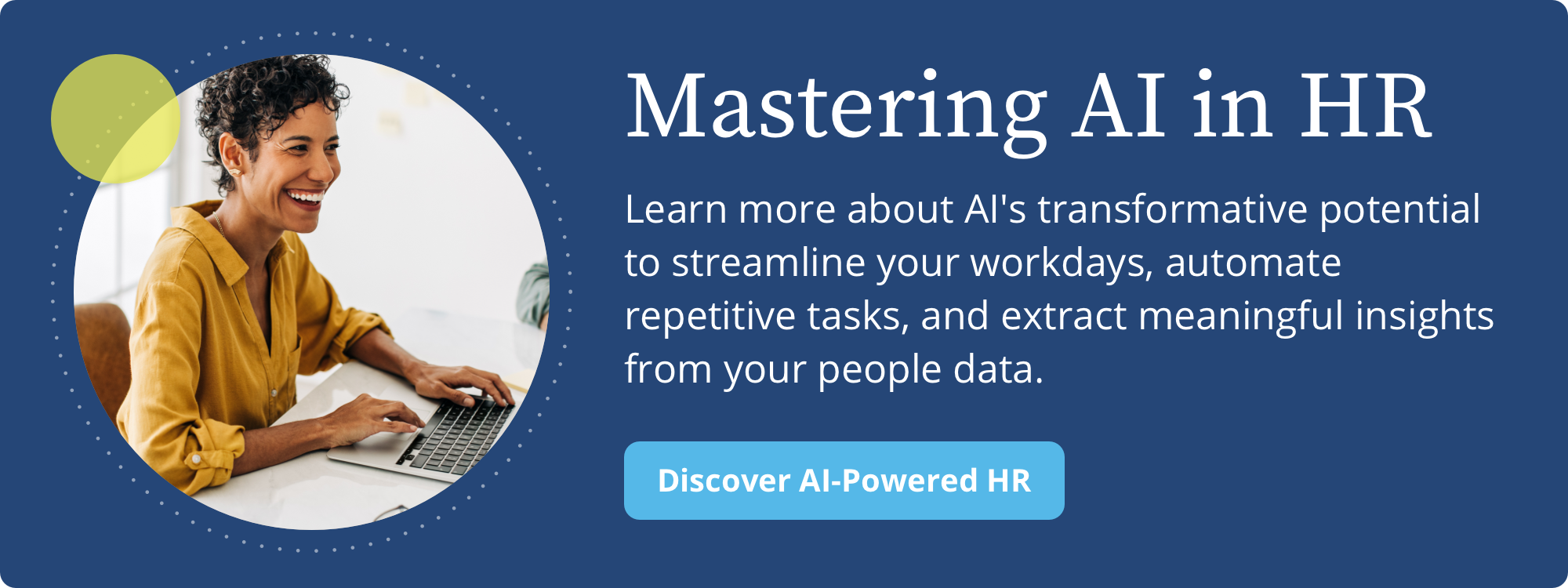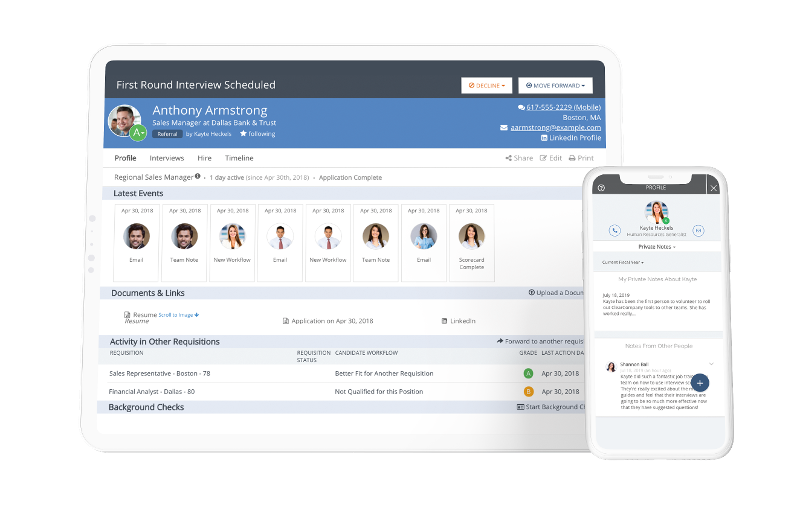This article was originally published in July 2015. It was updated with new information about onboarding new employees in April 2022.
The first handful of employees at many businesses will rarely have a formal onboarding process. But as they grow, businesses need to develop a strategy for onboarding new employees. It’s an essential part of preparing them for what to expect from their role and company culture.
But make sure you don’t assume that pitching a powerful culture alone will attract the perfect candidates who will work hard no matter what and the rest will take care of itself. Companies need to create structured, efficient onboarding programs if they want to make great hires and keep them too. Onboarding helps new hires get to know their colleagues, learn about the company, and become proficient in their roles.
Here are some of the most important things companies should know when putting together their employee onboarding programs.
Do you have an #OnboardingPlan for your new hires? The evidence shows that longer, structured onboarding plans can lead to 50% higher retention. Find out more important #Onboarding facts:1. Bad Onboarding Can Lead to High Turnover
As it turns out, doing a poor job of introducing employees to their work does more than slow them down — it can push them out the door. Nearly 90% of employees decide if they’ll stay at your company within the first six months of employment. Not to mention, evidence shows that when companies focus on onboarding, their retention rates can be 50% higher than those that don’t.
So, bad onboarding doesn’t just mean an imperfect start at a job — it can mean a full stop. If your company is looking to avoid turnover, first examine how new employees are introduced to their work environment, company culture, and new responsibilities before anything else. Here are a few questions you might consider:
- Do employees complete any part of the onboarding process before their first day?
- What percentage of current employees have been employed for more than six months?
- Does onboarding include time to meet with team members and other colleagues?
- How long does onboarding currently last?
Then, you can make changes to your current onboarding process to decrease turnover.
- New hire surveys to get feedback and make improvements to onboarding
- 30-, 60-, and 90-day performance reviews to gauge the effectiveness of onboarding
- Extend onboarding from 90 days to 120 days or more
- Schedule one-on-ones with new hires' team members and coworkers from other departments during the first few weeks
2. Bad Onboarding Can Lead to Lower Productivity
The Case for Longer Onboarding Programs
- As much as 20% of turnover happens in the first 45 days of employment.
- Great onboarding can lead to a 54% increase in engagement.
- 69% of new hires will stick with the company for at least three years if they had a good onboarding experience.
This is not a redundant title; effective onboarding is essential for retention and for creating productive employees. Companies with high turnover often experience lower productivity from their workers for many reasons. For one, high turnover can cause low morale. It disrupts workflows, leaves roles unfilled, and makes other employees wonder why their peers aren’t sticking around long-term.
It makes it harder to work efficiently when you’re not sure who you’ll be working with tomorrow — and when you and your team members are picking up the slack. In addition, research from Gallup shows that it can take new employees up to 12 months to reach “peak performance potential.”
Even if your business can afford the high cost of turnover, you’re still losing money on lost work from understaffed, unmotivated teams and less productive new hires.
3. Onboarding Matters to Executives, Too
The world of hiring C-level and other leaders can often seem like one completely removed from the rhythms of regular recruiting. But they need an onboarding plan, too — one that ensures they complete paperwork, as with all employees, but that is also personalized and hands-on. At many companies, new executives are paired with a mentor or work with a coach. Coaching is especially effective when onboarding new leadership remotely, according to Harvard Business Review.
At the executive level, hiring is more crucial than just about anywhere else, which means it’s important to get the onboarding process right. A bad start could be the tipping point that sends them to a competitor.
4. Standardized Onboarding Programs Increase Efficiency
You’re thinking about refreshing or creating a program for onboarding new employees — that’s great! Now you need to make sure it’s a formal, standardized process you can use for all of your new hires. Why? Because organizations that standardize the onboarding of new employees see 50% greater new hire productivity rates.
Among tons of other benefits, #Onboarding programs lead to new hires that are as much as 50% more productive. Find out more facts you should know about #EmployeeOnboarding:By creating a standardized process, you can make sure your new hires feel welcome and make it easier for them to get acquainted with your business. You ensure that every new employee gets the same amount of time (depending on their role) to fully ramp, whether that’s 90 days or nine months. Your human resources team benefits from the more organized, straightforward process.
When you launch your new onboarding plan, make sure to measure its effectiveness by asking new employees how they feel about their experience. Then, you can iterate and streamline the onboarding process for more productive hires who are up to speed in record time.
5. Great Onboarding Programs Jump the Gun
Luckily when it comes to onboarding new employees, there’s no penalty for an early start. Great onboarding begins before your new employees’ first day. It can be helpful to think of offer letter signing as the beginning of the onboarding process. From the time you receive the signed letter, your HR team and hiring managers should be prepared to start onboarding the new employee.
With the best onboarding software, your HR team can set up a new hire portal where paperwork can be completed and new hires can learn about the company. New employees can quickly access important information and complete tasks on or before their start date.
Starting onboarding early helps make the process seamless and ensures new hires feel welcome and prepared, especially in light of the uptick in the entirely online onboarding of remote workers over the last couple of years. Employees can finish the less fun — but necessary — onboarding tasks quickly and focus on learning the ropes of their new role.
6. Great Onboarding is Great For Business
The extra work you put into onboarding new hires has positive internal effects internally, like higher employee engagement and retention rates. But you’ll be happy to hear that its positive impact also extends to your customers. Research shows that companies with structured onboarding programs see a 63% increase in customer satisfaction year-over-year.
Did you know? Companies with structured onboarding programs see a 63% increase in customer satisfaction year-over-year.
That’s not a surprising fact when you think about it. When your employees begin their tenure at your company feeling prepared and supported, they’re engaged and confident in their abilities. When those employees interact with customers, that doesn’t go unnoticed. Happy employees equal happy customers, and with a top-notch onboarding experience, everyone is happy.
7. Onboarding New Employees is Easier Than You Think
A good onboarding program takes work, but that doesn’t mean it should be hard to apply or manage. ClearCompany's Employee Onboarding Software has all the tools you need to get your new hires ready for work on day one. We can switch you to an entirely paperless onboarding program — no more lost forms or unfinished paperwork.
Roll out a streamlined onboarding program in days with implementation and customer support teams backing you every step of the way. Sign up for a demo with the ClearCompany experts and start your journey to a better onboarding experience.
%20(500%20%C3%97%20159%20px)%20(9).png)


